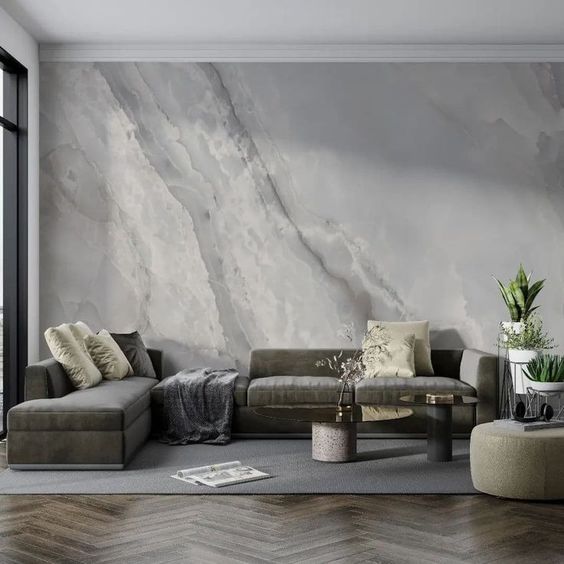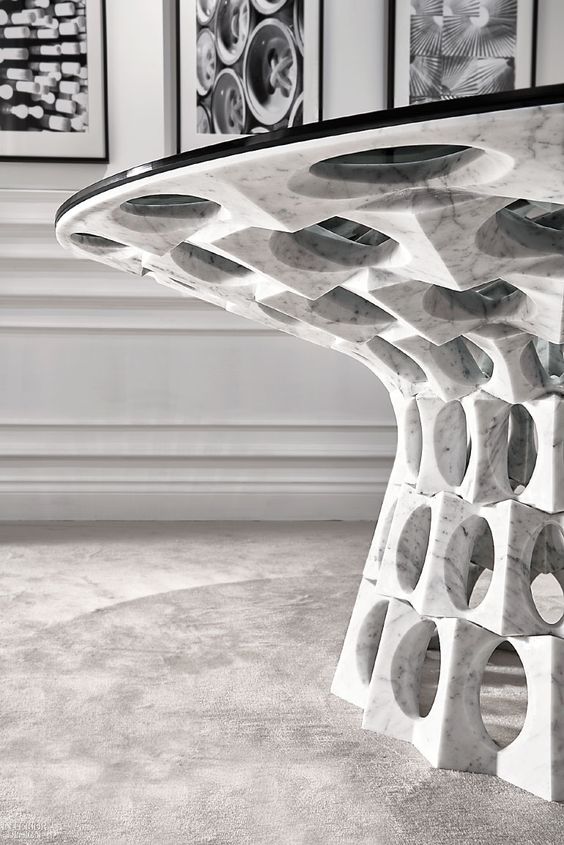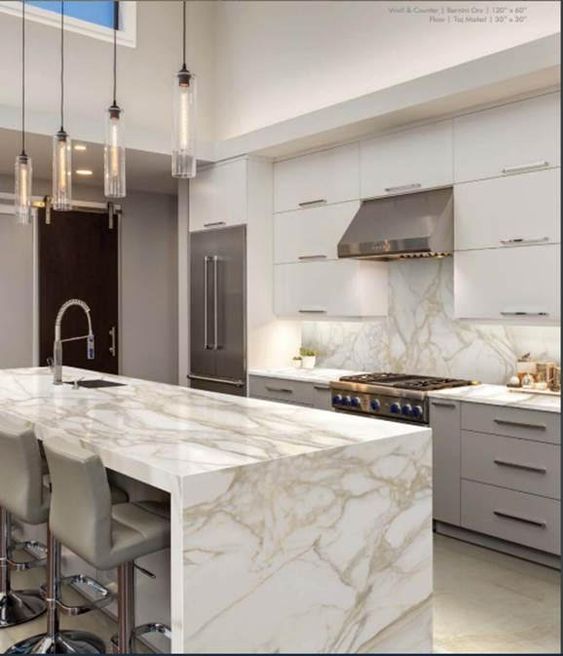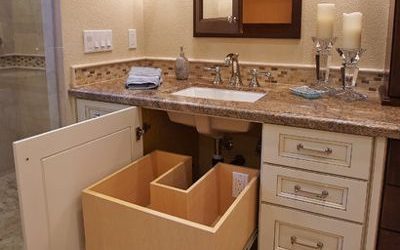
Source: asdfgfgf
Marble is a metamorphic rock that has been a symbol of luxury, refinement, and timeless beauty for centuries. Formed from limestone subjected to intense heat and pressure beneath the Earth’s crust, marble exhibits a distinctive crystalline structure and a variety of colors and patterns. Renowned for its elegance and versatility, marble has found its place in various architectural and artistic applications, becoming a sought-after material in interior design.
-
Key Characteristics of Marble:
Variety of Colors and Patterns:
Marble boasts a diverse palette of colors, including classic whites, creams, greys, pinks, greens, and more. The stone often features intricate veining, giving each slab a unique and natural aesthetic.
Lustrous Surface:
The polished surface of marble contributes to its lustrous and reflective appearance, enhancing its visual appeal. This characteristic makes it a popular choice for creating a luxurious atmosphere in interior spaces.
Versatility:
Marble is a versatile material that can be honed, polished, or left in a natural state, providing flexibility for various design preferences. It can be shaped into slabs, tiles, and customized forms to suit specific applications.
Historical Significance:
Throughout history, marble has been revered and utilized in iconic structures and sculptures. From ancient Greek and Roman architecture to Renaissance art, marble has left an indelible mark on the world’s cultural and artistic heritage.
Natural Coolness:
Marble tends to stay cooler than room temperature, making it a popular choice for flooring in warmer climates. This natural coolness adds to its appeal for areas like bathrooms and kitchens.
Use in Sculpture and Art:
Many renowned sculptures and works of art have been crafted from marble due to its workability and ability to capture intricate details. Famous examples include Michelangelo’s “David” and the Parthenon sculptures.
Interior Design Applications:
Marble finds extensive use in interior design, gracing floors, countertops, walls, and various decorative elements. It contributes a sense of sophistication and luxury to residential and commercial spaces alike.
Book matching Technique:
The book matching technique, where two adjacent marble surfaces mirror each other, is often employed to create stunning and symmetrical patterns, enhancing the visual impact of marble installations.
Despite its undeniable beauty, it’s important to note that marble is a porous stone and can be susceptible to staining and scratching. Careful maintenance, including sealing and proper cleaning, is crucial to preserving its appearance over time.

Source: vk.com
-
Here are various ways in which marble is commonly used in interior design:
Flooring:
Marble flooring is a luxurious choice that adds a sense of sophistication to spaces. It comes in various colors and patterns, allowing for versatile design options.
Countertops and Backsplashes:
Marble countertops, often used in kitchens and bathrooms, provide a smooth and elegant surface. Marble backsplashes can complement these countertops, creating a cohesive and stylish look.
Kitchen Islands:
Marble is frequently used for kitchen islands, either as a solid surface or incorporated into the design with other materials. It adds a touch of luxury and practicality to the kitchen.
Bathrooms:
Marble is a popular choice for bathroom surfaces, including countertops, vanity tops, shower walls, and flooring. It imparts a clean and sophisticated aesthetic.
Fireplace Surrounds:
Marble fireplace surrounds can serve as focal points in living spaces, adding a touch of elegance and warmth. Carrara and other white marbles are commonly chosen for this purpose.
Walls and Wall Cladding:
Marble wall cladding is used to create visually stunning feature walls. It can be applied in various patterns, creating a sense of luxury and grandeur.
Staircases and Flooring Borders:
Marble is often used to create intricate designs on staircases or as border details in flooring, adding a touch of opulence.
Furniture:
Marble is incorporated into furniture design, such as coffee tables, dining tables, and side tables. These pieces often become focal points in a room, combining functionality with aesthetic appeal.
Decorative Objects:
Small decorative items, such as vases, trays, and sculptures made of marble, can add a refined touch to interior spaces.
Luxurious Entrances:
Marble is frequently used in grand entrances and foyers, creating a lasting impression with its polished and sophisticated appearance.
Bath Accessories:
Marble is used for accessories like soap dishes, toothbrush holders, and trays in bathrooms, providing a cohesive design theme.
Book matched Marble:
Book matching is a technique where two adjacent surfaces mirror each other, creating a symmetrical pattern. This is often used with marble slabs to achieve visually stunning effects, especially in wall applications.
Outdoor Use:
While marble is more commonly associated with indoor spaces, it can be used in outdoor applications such as patios and pool surrounds, particularly in milder climates.

Source: Interior Design
-
Here are some well-known types of marble, each with its own distinct aesthetic qualities:
- Carrara Marble:
- Origin: Carrara, Italy
- Characteristics: White or blue-grey background with fine, feathery veining. Classic and widely used in sculptures and architectural applications.
- Calacatta Marble:
- Origin: Carrara, Italy
- Characteristics: Similar to Carrara but with more dramatic and bolder veining. Often considered more luxurious and is popular in high-end applications.
- Statuario Marble:
- Origin: Carrara, Italy
- Characteristics: High-quality, white marble with more prominent and dramatic veining. Frequently used in sculptures and architectural elements.
- Crema Marfil Marble:
- Origin: Spain
- Characteristics: Creamy beige background with irregular veining. Commonly used in flooring, countertops, and bathroom applications.
- Emperador Marble:
- Origin: Spain
- Characteristics: Rich brown color with white veining. Often used for flooring and countertops, providing a warm and luxurious feel.
- Travertine:
- Origin: Italy, Turkey, Iran
- Characteristics: Porous with a natural texture and earthy tones, often featuring holes. Popular for flooring, wall cladding, and outdoor applications.
- Nero Marquina Marble:
- Origin: Spain
- Characteristics: Black marble with striking white veining. Used for both traditional and modern design applications.

Source: midwesttile.com
8. Thassos Marble:
-
- Origin: Greece
- Characteristics: Pure white with a crystalline appearance. Valued for its brightness and clarity, commonly used in high-end projects.
9. Verde Guatemala Marble:
-
- Origin: Guatemala
- Characteristics: Green marble with white and black veining. Adds a unique and vibrant touch to interior applications.
10. Bianco Venatino Marble:
-
- Origin: Italy
- Characteristics: White background with light grey veining. Known for its classic and timeless appearance.
11. Rainforest Brown Marble:
-
- Origin: India
- Characteristics: Brown background with unique patterns resembling tree branches. Adds a distinctive and natural look to interiors.
12. Onyx Marble:
-
- Origin: Various
- Characteristics: Translucent stone with vibrant colors and unique veining. Often used for decorative elements and backlit applications.
13. Breccia Marble:
-
- Origin: Italy
- Characteristics: Characterized by fragmented patterns and a mix of colors. Provides a visually interesting and dynamic appearance.
14. Blue Pearl Marble:
-
- Origin: Norway
- Characteristics: Blue-grey background with reflective minerals that create a pearlescent effect. Adds a modern and elegant touch.
15. Pink Porrino Marble:
-
- Origin: Spain
- Characteristics: Pink background with darker veins. Adds warmth and sophistication to interiors.

Source: wescover.com
Conclusion
It’s important to note that while marble is a beautiful and versatile material, it is also relatively soft and porous compared to some other stones. This means it can be susceptible to scratching and staining, and it may require proper care and maintenance to preserve its appearance.
Your Title Goes Here
Your content goes here. Edit or remove this text inline or in the module Content settings. You can also style every aspect of this content in the module Design settings and even apply custom CSS to this text in the module Advanced settings.

About Author apurva nagure
Your Title Goes Here
Your content goes here. Edit or remove this text inline or in the module Content settings. Your content goes here.
.
You May Also Like…
“Sinks that Wow: A Guide to Bathroom Sink Designs”
Source: behance.netYour bathroom is more than just a utilitarian space; it's a canvas for personal expression and...
Sustainability In Interior Design
As the world shifts towards a more environmentally aware mindset, the concept of sustainability has become integral to...
Your Title Goes Here
Your content goes here. Edit or remove this text inline or in the module Content settings.



